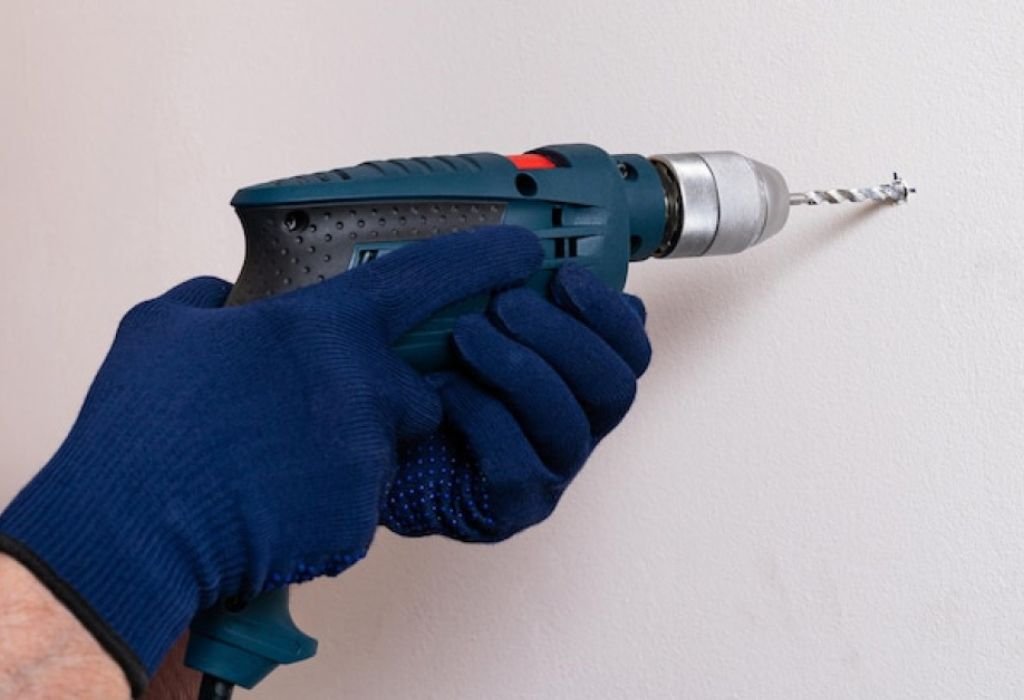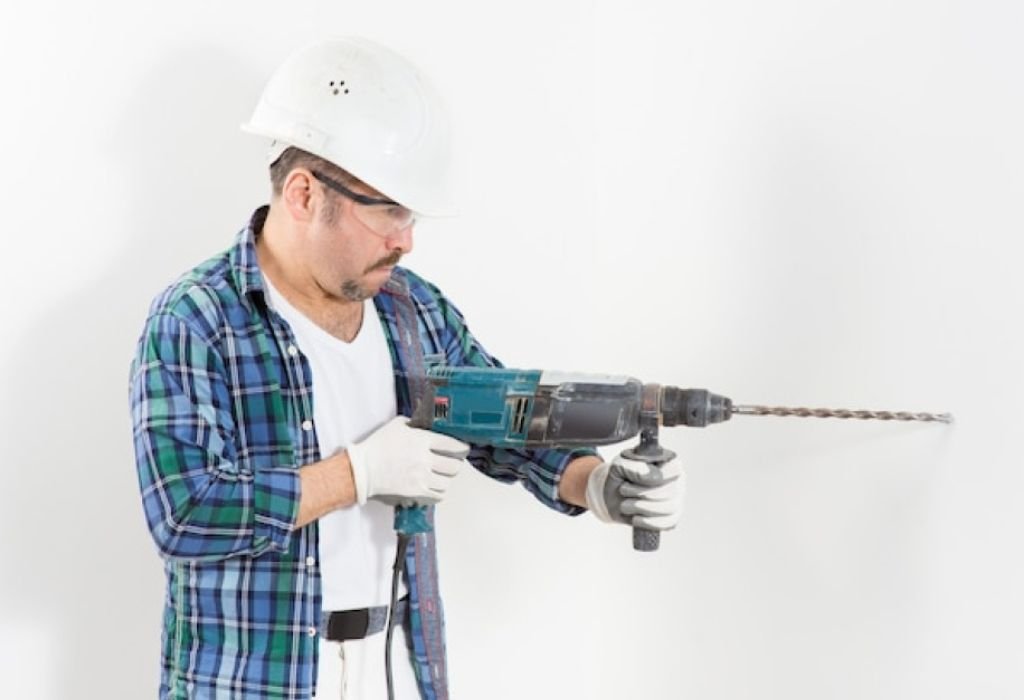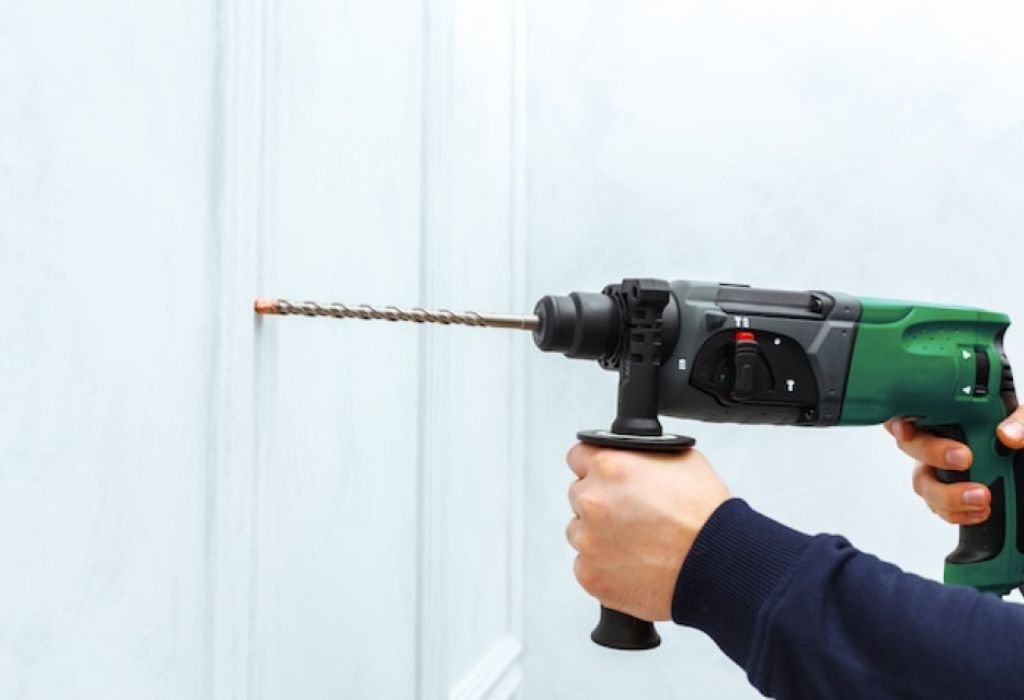A simple weekend project can quickly become complicated when the wall turns out to be solid brick or concrete.
The question often arises: can i use rotary masonry in a hammer drill without risking broken bits, cracked walls, or wasted time.
Hammer drills are common in households because they double as regular drills.
Many people attempt masonry jobs with them, but success depends on the material, bit type, and drilling technique.
Rotary hammers, on the other hand, are built for tougher jobs. Their piston-driven mechanism produces stronger impact energy, making them faster and more efficient in concrete.
The performance gap is significant. Rotary hammers with SDS-Plus typically deliver between 1 and 5.8 joules of impact energy, while hammer drills provide much less 【source: Bosch Professional】.
This difference explains why one tool bores through reinforced concrete while the other slows to a crawl.
Market studies show that the global power tools industry is expanding at over 6% annually 【source: Grand View Research】.
With more homeowners and professionals investing in hammer drills and rotary hammers, knowing when to use each tool is becoming increasingly important.
Choosing the wrong tool leads to overheated bits, uneven holes, and damaged masonry surfaces.
Using the correct approach ensures faster drilling, longer bit life, and safer results.
This guide explores whether hammer drills can perform rotary masonry effectively, how to select the right bits, and which techniques reduce risk. Readers will also learn when to accept the limits of a hammer drill and upgrade to a rotary hammer for cleaner, faster, and safer results.
Hammer Drill vs Rotary Hammer — What Changes in Masonry

Hammer drills create impact using a cam or clutch system. Rotary hammers use electro-pneumatic pistons, which deliver stronger blows.
This mechanical difference explains why hammer drills slow down in hard concrete. Rotary hammers excel in deeper or wider masonry holes.
What makes a hammer drill different from a rotary hammer?
A hammer drill vibrates the bit, while a rotary hammer drives it with piston force.
When is a hammer drill enough for rotary masonry work?
It works well for shallow holes in brick, mortar, or cinder block.
When does a rotary hammer become the better choice?
When drilling large or deep holes in dense concrete.
Does impact energy really change speed that much?
Yes, higher joule ratings mean faster progress in masonry.
Will operator fatigue differ between the two?
Yes, hammer drills create more vibration and fatigue.
Bits and Interfaces — SDS, SDS-Plus, SDS-Max, and Regular Masonry Bits
Masonry drilling depends on bit design. SDS bits lock into slotted chucks, while regular bits rely on friction.
SDS-Plus is the most common for home and trade use. SDS-Max handles heavier jobs with larger diameter holes.
Do SDS-Plus and SDS-Max bits swap between tools?
No, they have different shank sizes and power ratings.
Can regular straight-shank masonry bits be used for rotary masonry?
Yes, but mainly in hammer drills with standard chucks.
Why do SDS bits run truer under impact?
The slotted shank allows axial movement that absorbs piston blows.
What happens if the wrong shank is forced?
It slips, wears out, or damages the chuck.
Are chisels also SDS-based?
Yes, SDS chisels are common for demolition.
The Core Question — can i use rotary masonry in a hammer drill
A hammer drill can perform rotary masonry with carbide masonry bits. It works, but progress is slower and bits wear faster than with a rotary hammer.
Hammer mode should always be engaged in masonry drilling. The tool performs best with small anchor holes or light jobs.
What masonry jobs suit a hammer drill best?
Small holes for wall anchors or plugs in brick and block.
When will a hammer drill struggle?
Dense structural concrete or reinforced slabs.
Is bit selection more critical with a hammer drill?
Yes, only high-quality carbide masonry bits should be used.
Will holes wander more with a hammer drill?
Yes, especially in harder materials.
Can dust removal improve speed?
Yes, frequent clearing keeps drilling efficient.
Safe Setup and Technique for Hammer Drills in Masonry
Using the right setup improves safety and drilling results. Choose masonry-rated bits, adjust to hammer mode, and maintain moderate pressure.
Avoid forcing the drill, which increases heat and risk of cracking. Always use protective gear during operation.
What speed should be used for masonry bits?
Moderate RPM prevents overheating.
How often should dust be cleared from the hole?
Every few millimeters of depth.
Is water or cooling ever recommended?
Yes, light misting helps reduce dust and heat.
Which PPE is non-negotiable?
Glasses, gloves, ear plugs, and a dust mask.
Will a clutch help with binding?
Yes, it reduces kickback injuries.
Performance Reality — Speed, Wear, and Hole Quality

Hammer drills complete masonry tasks but at slower rates. Bits dull faster, and vibration increases operator fatigue.
Rotary hammers achieve faster drilling because of higher impact energy. They also extend bit life by transferring force more effectively.
Will a hammer drill take longer in concrete?
Yes, it is significantly slower than a rotary hammer.
Do masonry bits overheat faster in hammer drills?
Yes, extended time-in-cut builds more heat.
Does vibration affect hole accuracy?
Yes, it makes holes less precise.
Are premium bits worth it?
Yes, they stay sharp longer and drill cleaner.
How much faster is a rotary hammer on average?
Often several times faster in dense masonry.
When to Step Up — Deciding If a Rotary Hammer Is Necessary
Rotary hammers are best when drilling large or repeated holes. They also handle reinforced concrete and chiseling.
SDS-Plus covers most medium-duty work, while SDS-Max powers through large, heavy-duty applications.
What hole size triggers a rotary hammer upgrade?
Anything above ½ inch in hard concrete.
Is reinforced concrete a special case?
Yes, it requires a rotary hammer and SDS bits.
Can a hammer drill run chisels?
No, only rotary hammers support chiseling.
What if there are dozens of holes?
A rotary hammer is faster and more efficient.
Does anti-vibration tech matter for long sessions?
Yes, it reduces fatigue and improves safety.
Adapters and “Rotation-Only” Use Cases
Rotary hammers can use adapters to fit regular bits. However, this requires rotation-only mode.
Adapters add length and wobble, so they are not ideal for masonry drilling.
Can a rotary hammer spin regular drill bits safely?
Yes, but only in rotation-only mode with adapters.
Should hammer mode ever be on with regular bits?
No, it risks damaging the bit and chuck.
Does an adapter add runout or length?
Yes, it makes holes less accurate.
What materials are OK in rotation-only?
Wood, metal, and plastic.
Does the manual allow adapters?
Some brands allow it, but always confirm first.
Risk Management — Protecting the Tool, Bit, and Work
Improper use causes overheating, cracked brick, and broken bits. Correct technique prevents tool damage and safety hazards.
Kickback is a real risk, so using side handles and proper stance is important.
How to spot an overheating masonry bit?
Look for discoloration or smoking dust.
What causes cracked brick faces?
Forcing the tool or pushing too hard.
How to reduce kickback?
Hold firmly with both hands and use the clutch.
When to retire a bit?
When it is chipped, glazed, or cuts too slowly.
Is dust extraction worth it?
Yes, it speeds drilling and keeps the area safe.
Cost and Time — Rent, Buy, or Push Through

Hammer drills are fine for occasional jobs. But repeated masonry work makes a rotary hammer more cost-effective.
Renting is often the best choice for one-off projects. Buying pays off for regular heavy use.
Is renting a rotary hammer smart for a weekend?
Yes, it saves money and time.
Do premium SDS bits outlast budget ones?
Yes, especially in reinforced concrete.
Will forcing a hammer drill void warranties?
Yes, misuse can cancel coverage.
What hidden costs come from slow drilling?
Extra bits, lost time, and higher fatigue.
How to decide buy vs rent?
Base it on project frequency and hole size.
Quick Comparison Table
| Feature | Hammer Drill | Rotary Hammer |
| Mechanism | Cam/Clutch | Piston System |
| Impact Energy | Low | High (1–5.8 J +) |
| Hole Size | Small | Medium to Large |
| Suitable Materials | Brick, block | Concrete, stone |
| Vibration | Higher | Lower |
| Speed | Slow | Fast |
| Longevity | Shorter | Longer |
Conclusion
The answer to can i use rotary masonry in a hammer drill is yes, but only for light tasks in softer masonry. Hammer drills manage small anchors in brick and block when equipped with proper carbide masonry bits.
For larger holes, hard concrete, or repetitive drilling, a rotary hammer is the safer and more efficient option. Using the right tool saves time, extends bit life, and reduces risk.

I’m John F. Nicholas, the founder, lead writer, and drill enthusiast behind 101drill.com. With years of hands-on experience in power tools and DIY projects, I created this platform to share practical knowledge, expert tips, and real-world insights to help others master the art of drilling.
